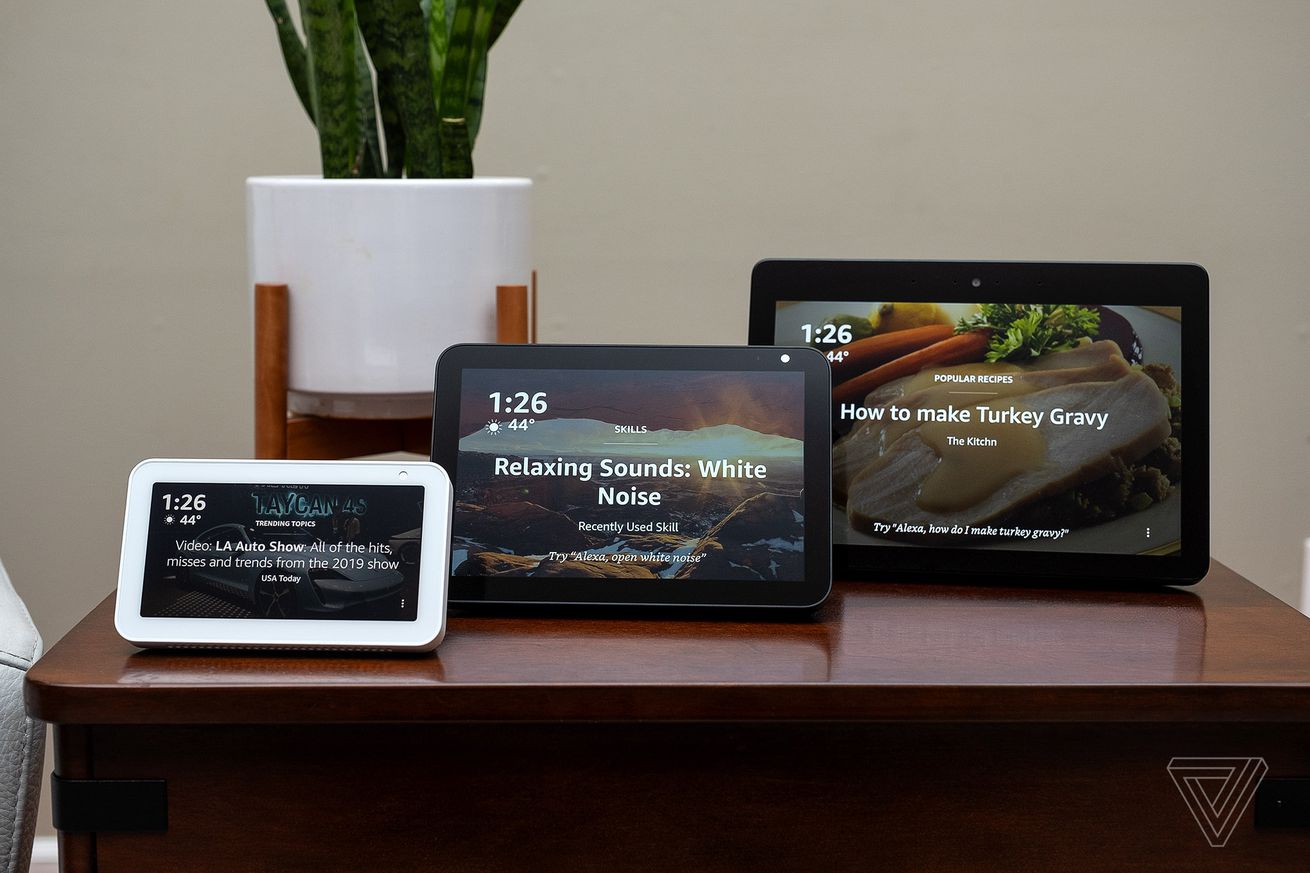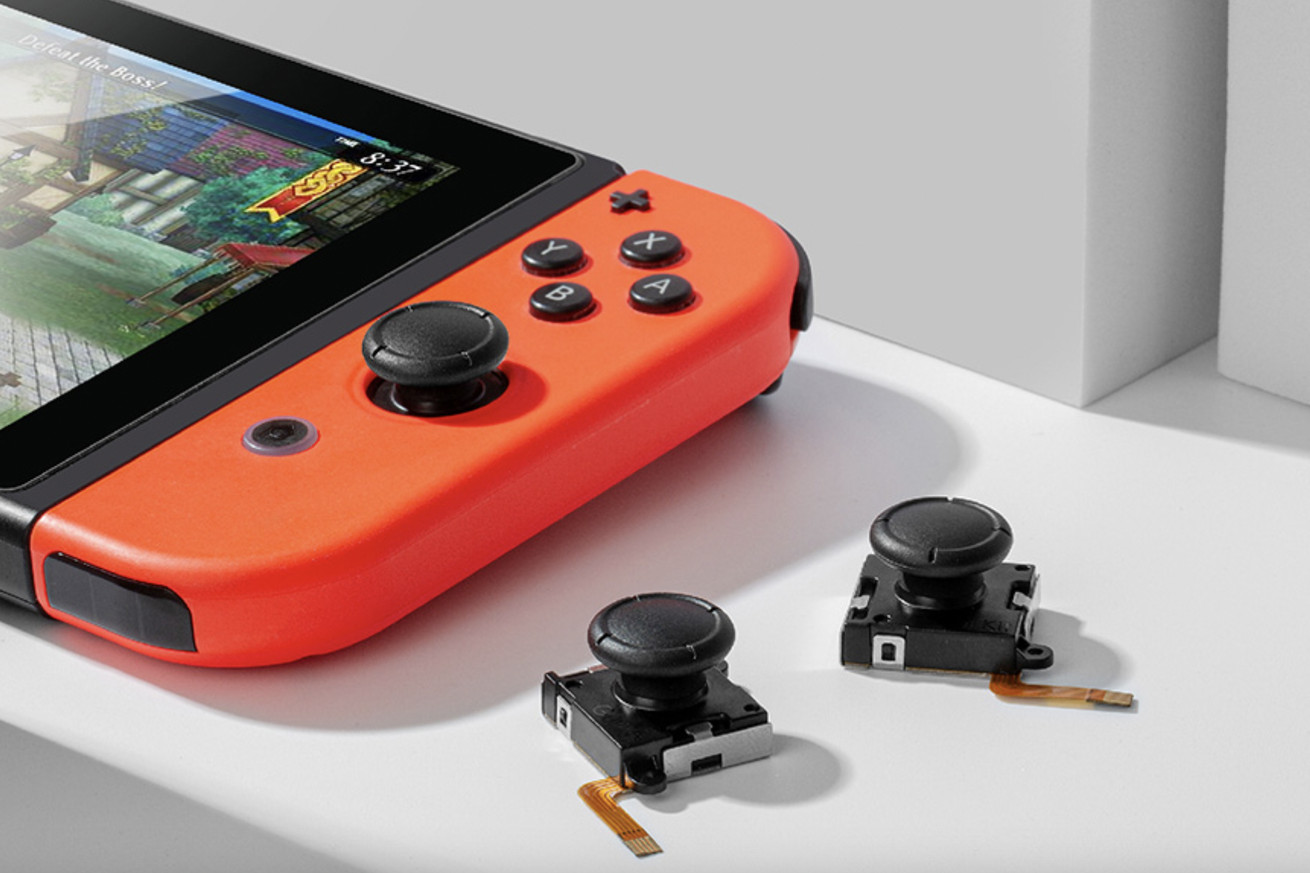
Amazon’s current Echo lineup offers a broad selection of smart speakers and displays that can fit just about anywhere in your home. Whether you want to place a voice assistant in your living room, replace the bulletin board in your office, or pick up a touchscreen-enabled device to showcase recipes in the kitchen, there's an Echo device for just about every occasion and use case.
Regardless of why you might want one, there’s always a way to save on Echo devices, from the last-gen Dot to the wall-mounted Echo Show 15. Even when they’re selling at full price, for instance, Amazon offers a 25 percent discount when you trade in select devices, meaning there are still other ways to save money when none of the models are on sale.
Below, we’ve rounded up the best deals available on each device in Amazon’s Echo lineup. The bulk of them are currently only available for their full retail price, but some models — specifically the second-gen Echo Show 5 Kids — are still available at a steep discount.
Best Amazon Echo deals
The best Echo Dot deals
In September, Amazon announced the fifth generation of the Echo Dot. It looks more like a sphere than an actual dot — much like its last-gen predecessor — but offers twice as much bass as the prior model and a temperature sensor; it also doubles as an Eero mesh Wi-Fi extender, though, said functionality will also be coming to the prior model at some point via a free over-the-air firmware update.
Despite the arrival of the new model, you can still pick up the third-gen Echo Dot, which retains the puck-like design of earlier models and is available for its full retail price of $39.99 at Amazon, Target, and Best Buy. As for the fifth-gen model, it’s currently available at Best Buy, Target, and Amazon for $49.99 with up to four months of Amazon Music Unlimited.
If you’re looking to upgrade, Amazon, Target, and Best Buy are also selling the latest Echo Dot with a built-in LED display that showcases the time, weather, and other info for $49.99, which is about $15 more than the speaker’s most recent sale price.
The best Echo Dot Kids deals
Like the fourth-gen Echo Dot Kids, the fifth-gen iteration is as spherical as the adult version but is designed to look like a variety of creatures, specifically an owl or a dragon. It also comes with a year of Amazon’s Kids Plus service, which provides access to a slew of kid-friendly content, including audiobooks and games. That said, the latest edition features better sound, a temperature sensor, and other enhancements found on the standard model.
If you want to buy the newest, kid-centric Echo Dot, it’s available at Amazon, Best Buy, and Target right now for $59.99 (about $30 more than its best price to date).
The best Amazon Echo deals
The fourth-gen Amazon Echo also received a makeover in late 2020. The latest model sports a sphere-shaped design like the newer Echo Dot models, but one that’s noticeably bigger. That said, it also touts a built-in smart home hub and produces better sound than the fifth-gen Dot thanks to a pair of 0.8-inch tweeters and a 3-inch woofer.
As of right now, the fourth-gen Echo is on sale at Amazon, Best Buy, and Target with up to four months of Amazon Music Unlimited for $99.99 — about $25 more than the speaker’s most recent sale price and a far cry from its all-time low of $49.99.
The best Amazon Echo Studio deals
If you’re interested in an Alexa smart speaker with better audio quality and Dolby Atmos support, the Echo Studio is the Amazon product to check out. Although the speaker made its debut in 2019, Amazon recently rolled out an over-the-air software update that imbues it with new spatial audio processing technology and frequency range extension, which supposedly allows for improved clarity and a more immersive sound profile.
Unfortunately, however, Amazon’s Echo Studio is currently only available in black or white at Target, Amazon, and Best Buy for its usual asking price of $199.99. Like with other Echo devices, the latter retailer is also offering four months of Amazon Music Unlimited for free with each purchase.
The best Echo Show 5 deals
If you are looking for a compact Echo device that functions more as a smart clock than an entertainment speaker, the Echo Show 5 is the Echo device to consider. The latest edition, which launched in 2021, features an always-on microphone, an upgraded 2MP camera, a 5.5-inch display, and a physical shutter, allowing you to block the camera’s view.
Right now, the second-gen Echo Show 5 is available at Amazon, Target, and Best Buy in blue, black, or white for $84.99, which is $50 more than the smart display’s best price to date.
The best Echo Show 5 Kids deals
The Echo Dot isn’t the only Echo device with a kid-friendly design. The Echo Show 5 Kids offers all of the same features as the standard, second-gen Echo Show 5, only with a vibrant print on the rear and a year of Amazon’s Kids Plus service, which grants your family access to a trove of videos, games, and other kid-friendly content. It even comes with a two-year warranty, providing a bit of protection from whatever your child might (literally) throw at it.
As far as pricing goes, the Echo Show 5 Kids is currently discounted at Amazon and Target to just $44.99 ($50 off), which nearly matches the smart display’s best price to date.
The best Echo Show 8 deals
Like the Echo Show 5, the Echo Show 8 is typically available in two distinct models, both of which feature 8-inch displays and dual speakers. However, unlike the first-gen Echo Show 8, the latest model is equipped with a 13MP camera and some unique software tricks, one of which grants it the ability to keep the subject centered in the frame as they move around.
We recently saw the second-gen Show 8 drop to an all-time low of $69.99 ($60 off), which is $50 less than the smart speaker’s current price at Amazon, Best Buy, and Target. Best Buy is also offering the second-gen model with four months of Amazon Music Unlimited at no additional cost.
The best Echo Show 10 deals
Two years ago, Amazon introduced a third-gen Echo Show 10. The device features a 10.1-inch HD screen and, unlike the Show 5 and Show 8, the 2021 model allows you to adjust the angle of the screen. It’s also mounted on a motorized, swiveling base that allows the display to follow you as you move. If you plan on doing a lot of video calling, this is the model to get.
We’ve seen the latest Echo Show 10 get discounted to as low as $169.99 ($80 off), however, it’s currently only available at retailers like Amazon, Target, and Best Buy for its full retail price of $249.99. Amazon is also offering it to select customers with six months of Amazon Music Unlimited, while Best Buy is throwing in four months of Amazon Music Unlimited.
The best Echo Show 15 deals
Unlike other smart displays in Amazon’s Echo lineup, the new Echo Show 15 is a large, wall-mounted device with a 15.6-inch touch display. It’s designed to replace the likes of bulletin boards and calendars, and as such, it functions as a shared hub for families where everyone can see digital sticky notes, upcoming calendar appointments, shopping lists, and other reminders. It also features support for Alexa, meaning it offers the same functionality as other Echo displays and smart speakers, and you can even use it as a decent 1080p TV in your kitchen or to display photos and artwork. It’s compatible with an optional stand, too, though, we’d argue it remains a better fit for your wall than your countertop given its size.
Having launched at the end of 2021, we’ve only seen a handful of discounts on the Echo Show 15. That said, you can currently buy it at Amazon, Best Buy, and B&H Photo for $249.99, its full retail price and $80 more than its sale price during Black Friday and Cyber Monday.

/cdn.vox-cdn.com/uploads/chorus_asset/file/24380724/wyze_battery_cam_pro.jpeg) Image: Zatznotfunny.com
Image: Zatznotfunny.com
/cdn.vox-cdn.com/uploads/chorus_asset/file/24380742/wco_pro_battery.jpeg) Image: Zatznotfunny.com
Image: Zatznotfunny.com


/cdn.vox-cdn.com/uploads/chorus_asset/file/24378396/quordle_merriam_webster.png) Screenshot: Emma Roth / The Verge
Screenshot: Emma Roth / The Verge

/cdn.vox-cdn.com/uploads/chorus_asset/file/24378049/nintendo_switch_joystick_replacement.jpeg) Image: Gulikit
Image: Gulikit

/cdn.vox-cdn.com/uploads/chorus_asset/file/24375461/Screenshot_2023_01_20_at_17.17.10.png) Image: The Iconfactory
Image: The Iconfactory
/cdn.vox-cdn.com/uploads/chorus_asset/file/24375402/tweetie.png) Images: Tweetie / Twitter via The Wayback Machine
Images: Tweetie / Twitter via The Wayback Machine
/cdn.vox-cdn.com/uploads/chorus_asset/file/24375375/friends.png) Screenshot: Echofon via The Wayback Machine
Screenshot: Echofon via The Wayback Machine


/cdn.vox-cdn.com/uploads/chorus_asset/file/24376825/TRM_EoSCreditConversionTable_04.jpg) Image: Crystal Dynamics
Image: Crystal Dynamics
/cdn.vox-cdn.com/uploads/chorus_asset/file/24372728/DSC04068_processed_alt.jpg) Photo by Allison Johnson / The Verge
Photo by Allison Johnson / The Verge
/cdn.vox-cdn.com/uploads/chorus_asset/file/24372659/DSC04046_processed.jpg)

/cdn.vox-cdn.com/uploads/chorus_asset/file/24352219/226481_Sense75_Keyboard_JPorter_0012.jpg)
/cdn.vox-cdn.com/uploads/chorus_asset/file/24352214/226481_Sense75_Keyboard_JPorter_0007.jpg)
/cdn.vox-cdn.com/uploads/chorus_asset/file/24352212/226481_Sense75_Keyboard_JPorter_0005.jpg)
/cdn.vox-cdn.com/uploads/chorus_asset/file/24352218/226481_Sense75_Keyboard_JPorter_0011.jpg)
/cdn.vox-cdn.com/uploads/chorus_asset/file/24352216/226481_Sense75_Keyboard_JPorter_0009.jpg)
/cdn.vox-cdn.com/uploads/chorus_asset/file/24352211/226481_Sense75_Keyboard_JPorter_0004.jpg)
/cdn.vox-cdn.com/uploads/chorus_asset/file/24352217/226481_Sense75_Keyboard_JPorter_0010.jpg)
/cdn.vox-cdn.com/uploads/chorus_asset/file/24352210/226481_Sense75_Keyboard_JPorter_0003.jpg)


